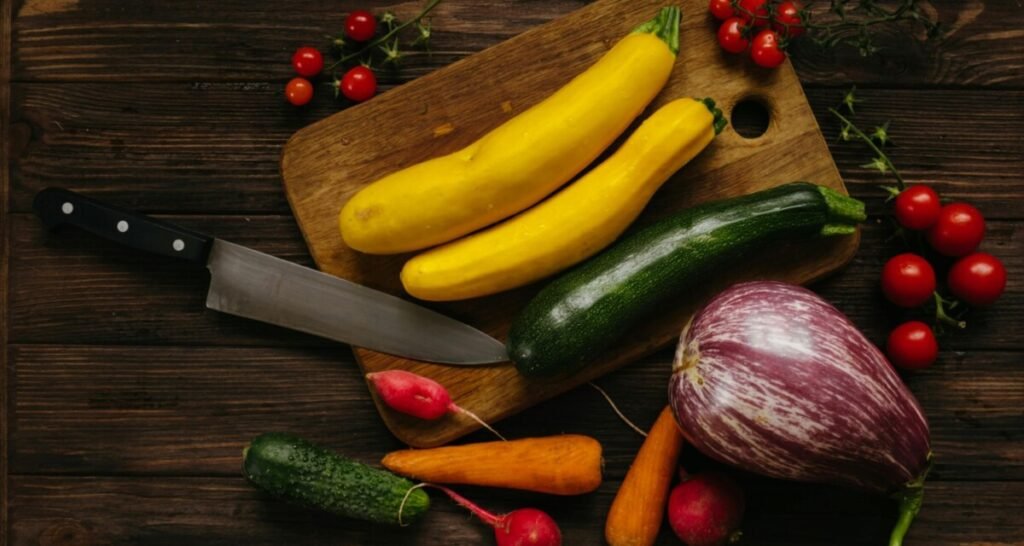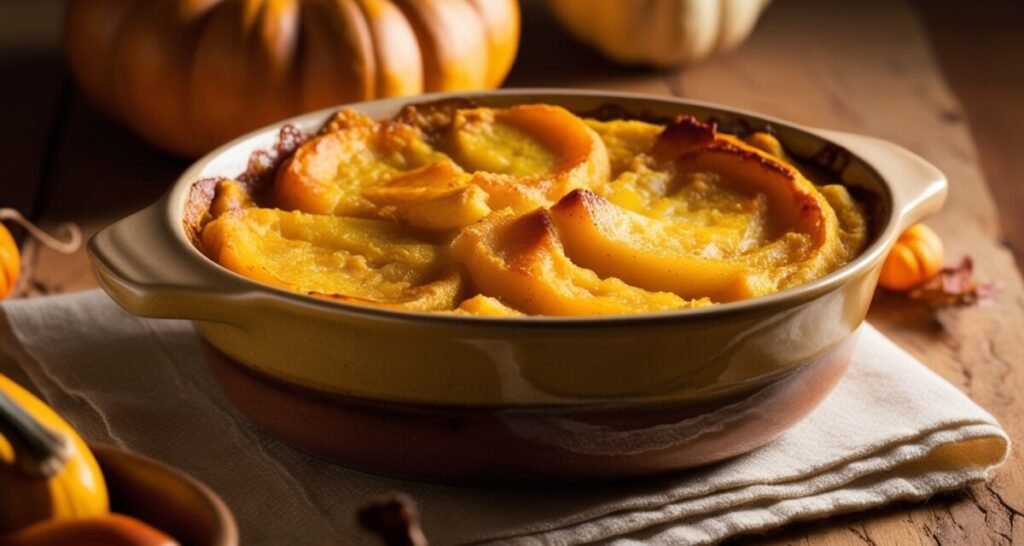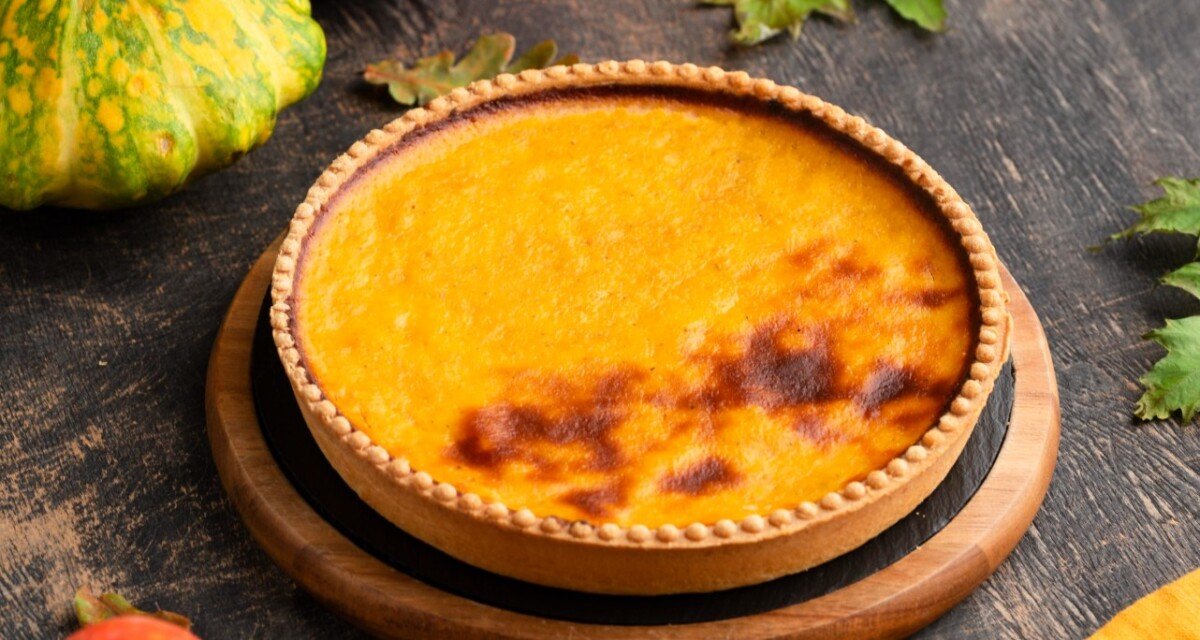Squash Casserole: The Ultimate Guide
When it comes to comfort food, few dishes can compete with the homey and hearty appeal of a squash casserole. This versatile dish, bursting with flavor and nutrients, has carved its niche in Southern cuisine and beyond. Whether you’re looking for a classic Southern squash casserole, a healthy twist on the traditional recipe, or simply want to explore new variations, this guide has got you covered. We’ll dive into the ingredients, preparation steps, health benefits, and even some tips and FAQs to ensure you master this delightful dish.
Introduction to Squash Casserole
Brief History
Squash casserole has deep roots in Southern cooking, where it’s been a staple for generations. Traditionally made with yellow squash, this dish has evolved over the years to include a variety of ingredients and styles, making it a beloved comfort food across the United States. The combination of tender squash, creamy cheese, and crispy toppings creates a symphony of flavors and textures that is hard to resist.
Importance in Southern Cuisine
In the South, meals are often about more than just sustenance—they’re about community and tradition. Squash casserole embodies this spirit, often appearing at family gatherings, potlucks, and holiday feasts. It’s a dish that brings people together, symbolizing the warmth and hospitality that Southern cuisine is known for.
Nutritional Benefits
Beyond its delicious taste, squash casserole is packed with nutritional benefits. Yellow squash, the primary ingredient, is rich in vitamins A, B6, and C, as well as magnesium and fiber. These nutrients are essential for maintaining good health, supporting everything from immune function to digestive health. Additionally, the other ingredients like eggs, cheese, and cream add protein and calcium, making this dish a well-rounded addition to any meal.
Ingredients and Preparation

Ingredients for Squash Casserole
Creating a mouth-watering squash casserole starts with gathering the right ingredients. The simplicity of this dish is part of its charm, allowing the flavors of the fresh squash to shine through.
- Types of Squash Used: While yellow squash is the traditional choice, you can also use zucchini or a mix of both. These varieties provide a delicate flavor and soft texture that meld perfectly with the other ingredients.
- Common Ingredients: Besides squash, you’ll need cheddar cheese, eggs, heavy cream, parmesan cheese, and a crunchy topping such as Ritz crackers. These elements come together to create a creamy, cheesy delight.
- Optional Ingredients: To add a personal touch, consider incorporating herbs like thyme or rosemary, spices such as paprika or cayenne pepper, or even a handful of chopped onions or garlic for extra flavor.
Preparation Steps
Making a squash casserole is straightforward, but there are a few key steps to ensure it turns out perfectly every time.
- Preheat and Prep: Start by preheating your oven to 350°F (175°C). While the oven heats, slice the squash into thin, even rounds. This ensures they cook evenly and absorb the flavors of the other ingredients.
- Cook the Squash: In a large skillet, cook the sliced squash with a bit of butter over medium heat until they’re tender but not mushy. This step removes excess moisture, preventing a soggy casserole.
- Combine Ingredients: In a mixing bowl, whisk together eggs, heavy cream, and a generous pinch of salt and pepper. Stir in the cooked squash, shredded cheddar cheese, and any optional ingredients you prefer.
- Assemble the Casserole: Pour the squash mixture into a greased baking dish. Sprinkle the top with grated parmesan cheese and crumbled Ritz crackers. This crunchy topping contrasts beautifully with the creamy interior.
- Bake: Place the dish in the preheated oven and bake for about 25-30 minutes, or until the top is golden brown and the casserole is bubbling. Let it cool slightly before serving to allow the flavors to meld.
Variations and Recipes
Popular Variations of Squash Casserole
One of the best things about squash casserole is its versatility. Whether you’re a purist who loves the classic Southern style or someone looking for a healthier version, there’s a variation for everyone.
- Southern Squash Casserole: This traditional recipe features yellow squash, cheddar cheese, eggs, heavy cream, and a buttery Ritz cracker topping. It’s a staple at Southern gatherings, providing a rich and creamy dish that’s hard to beat.
- Healthy Yellow Squash Casserole: For those watching their calories, this variation uses lighter ingredients. Swap out heavy cream for Greek yogurt or a light cream cheese, and use whole wheat breadcrumbs instead of crackers for a healthier crunch.
- Cheesy Squash Casserole: If you can’t get enough cheese, this version is for you. It doubles up on the cheddar and adds a layer of mozzarella for an extra gooey, cheesy experience.
Unique Squash Casserole Recipes
For those who like to experiment in the kitchen, these unique squash casserole recipes offer a delightful twist on the classic dish.
- Butternut Squash Quinoa Casserole: Combining the sweetness of butternut squash with the nutty flavor of quinoa, this recipe is both nutritious and delicious. It’s also a great option for those looking for a gluten-free casserole.
- Gluten-Free and Vegetarian Options: Using gluten-free breadcrumbs and skipping the heavy cream in favor of plant-based milk or cream can make your casserole both gluten-free and vegetarian. Add some nutritional yeast for a cheesy flavor without the dairy.
- Creative Twists: Don’t be afraid to get creative! Adding proteins like chicken or turkey can make the casserole a more substantial meal. Alternatively, try using different cheeses like Gruyère or blue cheese for a unique flavor profile.

Sample Recipe: Butternut Squash Quinoa Casserole
Here’s a sample recipe to get you started with a unique twist on the classic squash casserole.
Ingredients:
- 1 medium butternut squash, peeled and cubed
- 1 cup quinoa, rinsed
- 2 cups vegetable broth
- 1 cup shredded cheddar cheese
- 1 cup Greek yogurt
- 1 teaspoon garlic powder
- 1 teaspoon onion powder
- Salt and pepper to taste
- 1/2 cup gluten-free breadcrumbs
Instructions:
- Preheat your oven to 375°F (190°C).
- Cook the quinoa in vegetable broth according to package instructions.
- In a large bowl, combine cooked quinoa, butternut squash, cheddar cheese, Greek yogurt, garlic powder, onion powder, salt, and pepper.
- Transfer the mixture to a greased baking dish and sprinkle with breadcrumbs.
- Bake for 30-35 minutes, until the top is golden brown and the squash is tender.
Health Benefits
Nutritional Information
Squash casserole isn’t just a comfort food; it’s also packed with a wealth of nutrients that can benefit your health. Yellow squash, the star of this dish, is a powerhouse of vitamins and minerals.
- Vitamins and Minerals in Squash: Yellow squash is rich in vitamins A, B6, and C. Vitamin A supports eye health and the immune system, while B6 aids in brain development and function. Vitamin C is crucial for the growth, development, and repair of all body tissues. Additionally, squash contains important minerals like magnesium and potassium, which help maintain healthy blood pressure and bone strength.
- Health Benefits of Key Ingredients: The other ingredients in squash casserole also contribute to its nutritional profile. For example, eggs provide high-quality protein and essential fatty acids. Cheese adds calcium, which is vital for bone health. Using ingredients like Greek yogurt instead of heavy cream can boost the protein content while reducing fat.
- Comparing Nutritional Value of Different Squash Types: While yellow squash is the most commonly used, zucchini and butternut squash are also excellent choices. Zucchini is low in calories and high in fiber, making it a great option for weight management. Butternut squash is rich in beta-carotene, which the body converts to vitamin A.
Health Considerations
Incorporating squash casserole into your diet can offer numerous health benefits, but it’s important to consider how it fits into your overall nutritional plan.
- Squash Casserole in a Balanced Diet: This dish can be a nutritious addition to a balanced diet. Pairing it with a lean protein and a side salad can create a well-rounded meal. For instance, consider serving it with grilled chicken or a leafy green salad for added nutrients and fiber.
- Low-Calorie and Low-Fat Adaptations: To make your casserole lower in calories and fat, you can use light cheese or reduce the amount of cheese used. Substituting Greek yogurt or low-fat cream cheese for heavy cream can also cut down on calories while maintaining a creamy texture. Additionally, using whole wheat breadcrumbs or oats instead of crackers can increase fiber content.
- Considerations for Specific Dietary Needs: If you’re following a specific diet, such as low-carb or vegan, there are plenty of ways to adapt squash casserole. For a low-carb version, skip the breadcrumbs and focus on high-protein ingredients. For a vegan version, use plant-based cheese and milk substitutes, and replace eggs with a flaxseed or chia seed mixture.
For more detailed information on the health benefits of squash, check out this Healthline article.
Part 5: Cooking Tips and Serving Suggestions
Cooking Tips for the Perfect Squash Casserole
Making a squash casserole can be straightforward, but a few tips can help elevate your dish from good to great. Here are some essential pointers to keep in mind:
- Common Mistakes to Avoid: One common mistake is using too much liquid, which can make the casserole soggy. Make sure to cook the squash thoroughly to remove excess moisture before mixing it with other ingredients. Another pitfall is overcooking the casserole, which can lead to a mushy texture.
- Enhancing Flavor: Seasoning is key to a flavorful casserole. Don’t be shy with herbs and spices; a sprinkle of thyme or rosemary can add depth. Additionally, combining different types of cheese, like sharp cheddar and creamy mozzarella, can create a rich, complex flavor.
- Texture Balance: Achieving the right texture balance is crucial. The contrast between creamy squash and a crunchy topping is part of what makes this dish so delightful. Consider mixing in some sautéed onions or bell peppers for an added crunch.
Serving Suggestions
A well-made squash casserole is versatile and can be served in various ways. Here are some suggestions to enhance your dining experience:
- Ideal Side Dishes: Pair your casserole with light and fresh sides to balance the richness. A simple green salad with a tangy vinaigrette or steamed vegetables like broccoli or green beans work wonderfully.
- Presentation Tips: Presentation can make a big difference. Serve your casserole in a beautiful dish straight from the oven to the table. Garnish with fresh herbs like parsley or chives for a pop of color.
- Storing and Reheating Leftovers: Squash casserole makes excellent leftovers. Store it in an airtight container in the refrigerator for up to 3-4 days. When reheating, cover with foil and bake at 350°F (175°C) until heated through to retain moisture and prevent the topping from burning.
Taco casserole pairs well with a variety of sides. Consider serving it with a fresh salad, guacamole, or easy crockpot meals for busy families for a complete meal.
Frequently Asked Questions (FAQs)
Can You Freeze Squash Casserole?
Yes, you can freeze squash casserole! This makes it a great dish for meal prep or for saving leftovers. To freeze, allow the casserole to cool completely, then transfer it to an airtight container or wrap it tightly with aluminum foil. It can be frozen for up to 2-3 months. When you’re ready to enjoy it, thaw it in the refrigerator overnight and reheat it in the oven at 350°F (175°C) until it’s heated through. Freezing does not significantly affect the texture or flavor, making it convenient for busy weeks.
How Long Does Squash Casserole Last in the Fridge?
Squash casserole can be stored in the refrigerator for about 3-4 days. Make sure to keep it in an airtight container to maintain freshness and prevent it from absorbing any odors from the fridge. When reheating, it’s best to cover it with foil and bake at 350°F (175°C) until it’s warmed through, ensuring the top doesn’t get too browned.
Can You Make Squash Casserole Ahead of Time?
Absolutely! Preparing your squash casserole in advance can save time, especially if you’re planning for a gathering. You can assemble the casserole, cover it, and refrigerate it for up to 24 hours before baking. When you’re ready to bake, simply remove it from the fridge, uncover, and bake as directed. This allows the flavors to meld together beautifully, often resulting in an even tastier dish.
Conclusion and Final Tips
Final Thoughts
Making a delicious squash casserole is an enjoyable and rewarding experience. This versatile dish, rich in flavor and nutrients, can be adapted to suit various dietary preferences and occasions. Whether you’re preparing a traditional Southern casserole or experimenting with healthier versions, the key is to balance the flavors and textures to create a harmonious dish that delights the palate.
Additional Tips for Perfecting Squash Casserole
- Experiment with Cheeses: Don’t hesitate to try different types of cheese. A mix of sharp cheddar, mozzarella, and a sprinkle of parmesan can create a complex and delightful flavor profile.
- Incorporate Vegetables: Add more vegetables like bell peppers, onions, or even spinach to boost the nutritional value and add more texture and flavor to your casserole.
- Use Fresh Herbs: Fresh herbs like thyme, rosemary, and parsley can elevate the flavor of your casserole. Sprinkle them on top just before serving for a burst of freshness.
- Try Different Toppings: Instead of Ritz crackers, try using panko breadcrumbs, crushed cornflakes, or even a mixture of nuts for a unique crunch.
- Mind the Moisture: Always cook your squash thoroughly to remove excess moisture. This step is crucial to avoid a watery casserole.

